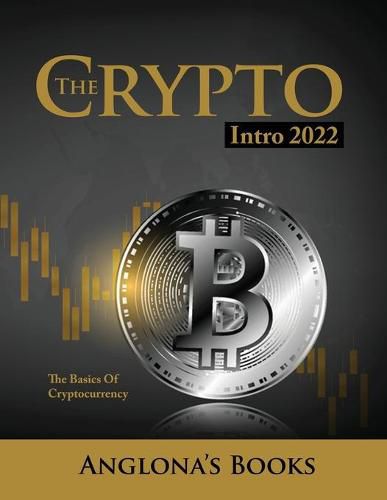Readings Newsletter
Become a Readings Member to make your shopping experience even easier.
Sign in or sign up for free!
You’re not far away from qualifying for FREE standard shipping within Australia
You’ve qualified for FREE standard shipping within Australia
The cart is loading…






This title is printed to order. This book may have been self-published. If so, we cannot guarantee the quality of the content. In the main most books will have gone through the editing process however some may not. We therefore suggest that you be aware of this before ordering this book. If in doubt check either the author or publisher’s details as we are unable to accept any returns unless they are faulty. Please contact us if you have any questions.
Crypto is red-hot right now. Media outlets are giving crypto unprecedented airtime while the general public has been captivated by the staggering price rises seen across the board. When measured in US dollar terms, Bitcoin ballooned by over 10 times in the 2017 calendar year alone. Beyond the tremendous increases in value, crypto has received so much attention because of the challenging questions it raises about money and the role of central authorities such as banks and governments - roles which were taken for granted in the past.Before the start of the crypto revolution, government-issued banknotes and coins seemed to be the only conceivable forms of money. We had never known any other way in our lifetime, nor in that of our parents. Fast-forward to today, and many members of the crypto community ardently believe that crypto is destined to replace government-issued money, just as the personal computer replaced the typewriter. If this vision is even halfright, the implications are hard to overstate. At the very least, crypto promises to substantially weaken the monopoly power of centralized institutions. But these are still early days for crypto. And most members of the public find crypto to be, well, cryptic. As United States Senator Thomas Carper said: Virtual currencies, perhaps most notably Bitcoin, have captured the imagination of some, struck fear among others, and confused the heck out of the rest of us. 1 Perhaps some readers can relate to that sentiment. Truthfully, few people have an accurate understanding of how crypto works, and many are highly skeptical. The Crypto Intro has been written to explain everything and respond to the tough crypto questions.But we may be getting ahead of ourselves. Before taking a look at how crypto functions, let’s make sure we understand what we’re talking about.
$9.00 standard shipping within Australia
FREE standard shipping within Australia for orders over $100.00
Express & International shipping calculated at checkout
This title is printed to order. This book may have been self-published. If so, we cannot guarantee the quality of the content. In the main most books will have gone through the editing process however some may not. We therefore suggest that you be aware of this before ordering this book. If in doubt check either the author or publisher’s details as we are unable to accept any returns unless they are faulty. Please contact us if you have any questions.
Crypto is red-hot right now. Media outlets are giving crypto unprecedented airtime while the general public has been captivated by the staggering price rises seen across the board. When measured in US dollar terms, Bitcoin ballooned by over 10 times in the 2017 calendar year alone. Beyond the tremendous increases in value, crypto has received so much attention because of the challenging questions it raises about money and the role of central authorities such as banks and governments - roles which were taken for granted in the past.Before the start of the crypto revolution, government-issued banknotes and coins seemed to be the only conceivable forms of money. We had never known any other way in our lifetime, nor in that of our parents. Fast-forward to today, and many members of the crypto community ardently believe that crypto is destined to replace government-issued money, just as the personal computer replaced the typewriter. If this vision is even halfright, the implications are hard to overstate. At the very least, crypto promises to substantially weaken the monopoly power of centralized institutions. But these are still early days for crypto. And most members of the public find crypto to be, well, cryptic. As United States Senator Thomas Carper said: Virtual currencies, perhaps most notably Bitcoin, have captured the imagination of some, struck fear among others, and confused the heck out of the rest of us. 1 Perhaps some readers can relate to that sentiment. Truthfully, few people have an accurate understanding of how crypto works, and many are highly skeptical. The Crypto Intro has been written to explain everything and respond to the tough crypto questions.But we may be getting ahead of ourselves. Before taking a look at how crypto functions, let’s make sure we understand what we’re talking about.